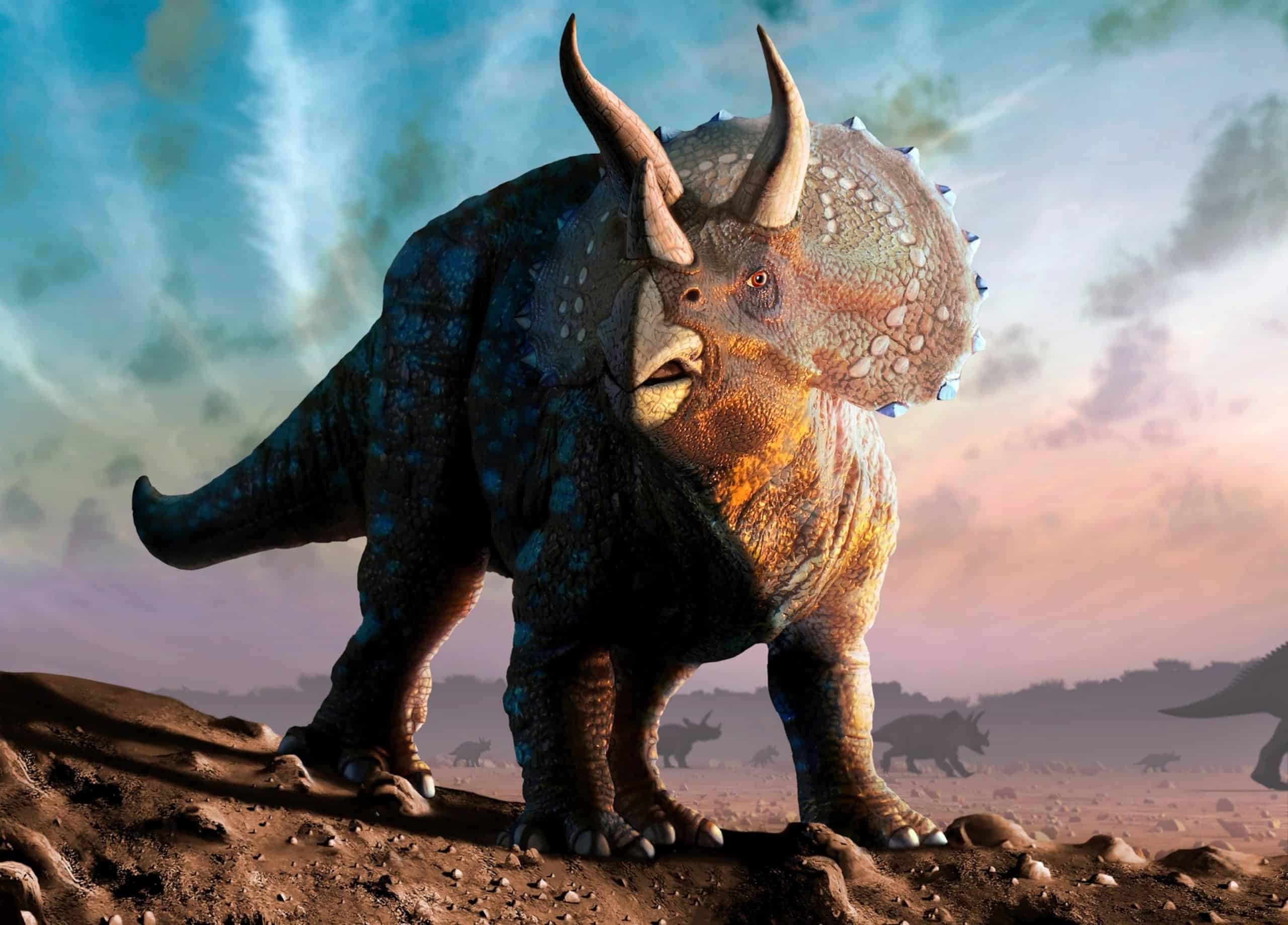Did you know that numerous species of dinosaurs have been found in North America? A vast number of fossils have been uncovered in the United States, Canada and the other countries that make up North America. Rare teeth and footprints from the Middle-Late Triassic Pekin Formation of North Carolina were the earliest examples of dinosaurs found on this continent. Dinosaurs from the Late Triassic Period are more recognizable and easier to identify leading to the discovery of North American species like Tawa, Chindesaurus, Gojirasaurus, and Coelophysis.
The only prehistoric period that did not see dinosaurs in North America was the Middle Jurassic. The Late Jurassic Period was much more populated by dinosaurs. Several states in America have areas of the Late Jurassic Morrison Formation, which is known as the most fertile source of dinosaur fossils in existence. This formation stretches from Colorado, Wyoming, Utah, and Montana down to New Mexico, Texas, and Oklahoma. If you’re curious about dinosaurs that roamed the United States and surrounding areas millions of years ago, keep reading! Here’s a look at some of the most notable dinosaur species found in North America.

1. Abydosaurus
Abydosaurus is a brachiosaurid sauropod known for its large head and uniquely shaped skull. Its name means Abydos lizard and its fossils were found in the Lower Cretaceous rocks of northeastern Utah. The first complete Abydosaurus skull was discovered in the United States.
This genus of brachiosaurid is known for having narrow teeth. Other species characteristically had broad teeth. These giant dinosaurs were roughly fifty feet long and weighed up to twenty tons. Abydosaurus were known to be herbivores. Their long necks made eating leaves off of tall trees easy. Even though their neck and tail were longer than their body, they balanced well with each other to keep the dinosaurs upright. This giant dinosaur was discovered in 2010.

2. Acrotholus
The unique Acrotholus dinosaur was discovered in the fertile Milk River Formation that stretched from Alberta, Canada to Montana and Kansas. This dinosaur is known for its sizeable dome-shaped head and bipedal movement. Research shows that it used its sturdy dome head in combat with other dinosaurs.
Discovered in 2013, the Acrotholus was roughly six feet long and weighed about 90 pounds. The acrotholus’ dome skull was more than two inches thick, making it useful when battling other animals. This species is known as the oldest bone-headed dinosaur in America. Acrotholus dinosaurs walked around on two legs and had short arms like a Tyrannosaurus ex. Like many other dinosaurs, this species ate a plant-based diet. Acrotholus walked the Earth more than 85 million years ago.
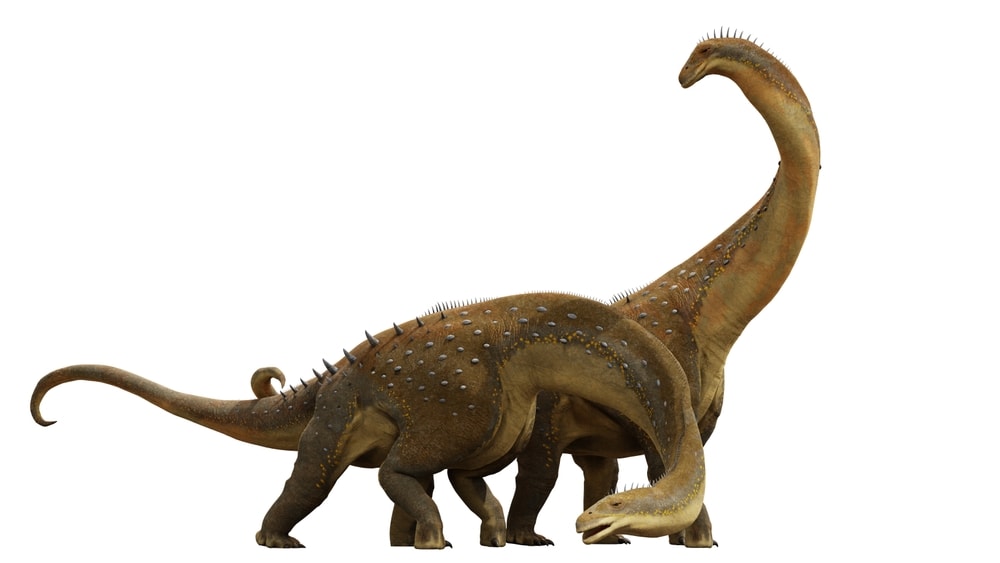
3. Alamosaurus
The Alamosaurus dinosaur came from the Late Cretaceous Period and originated in the southern part of North America. This creature went extinct roughly 66 million years ago. Alamosaurus was discovered in 1922 in the Ojo Alamo Formation in New Mexico.
Based on its fossils, the Alamosaurus was quite large. Paleontologists have named this dinosaur the largest dinosaur that dwelled in North America. Alamosaurus was roughly ninety-eight feet long and weighed over seventy tons. Its body was thought to be covered in bony armor. This big dinosaur was an herbivore and used its long neck to feast on ground plants. Experts believe that the Alamosaurus used its long tail as a whip.
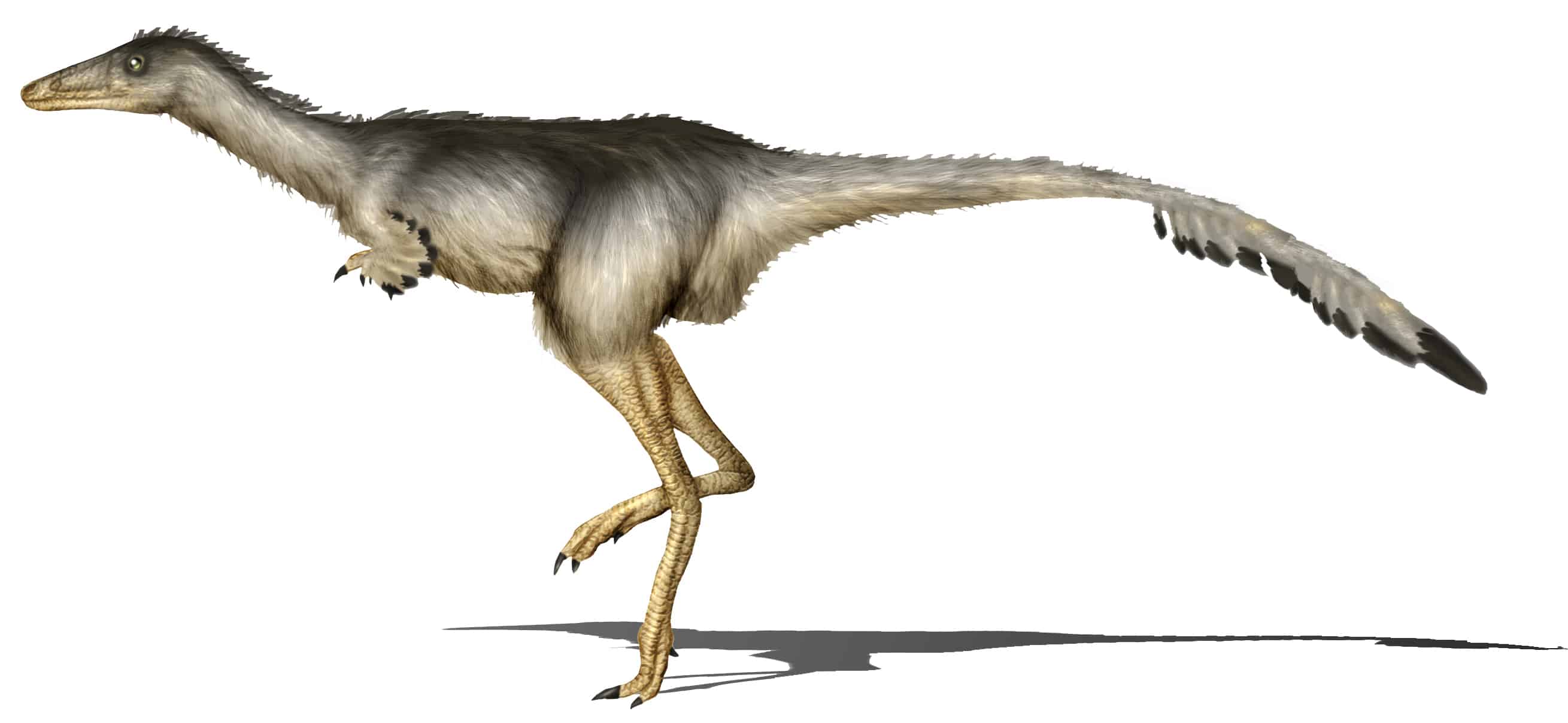
4. Albertonykus
Another dinosaur species discovered in Alberta, Canada is the Albertonykus. This dinosaur lived 70 million years ago during the Upper Cretaceous Period. Its name is Greek for Alberta Claws. Fossils indicate that this dinosaur walked on two legs and survived on a diet of termites.
Its small arms, and large claws were ideal for digging but not for burrowing. While no Albertonykus skull has been discovered yet, experts estimate that they had slender snouts and a lot of small teeth similar to anteaters and armadillos. They preyed on termites located in wood since mound-building termites hadn’t evolved yet. The Albertonykus was found in Alberta in 2009.
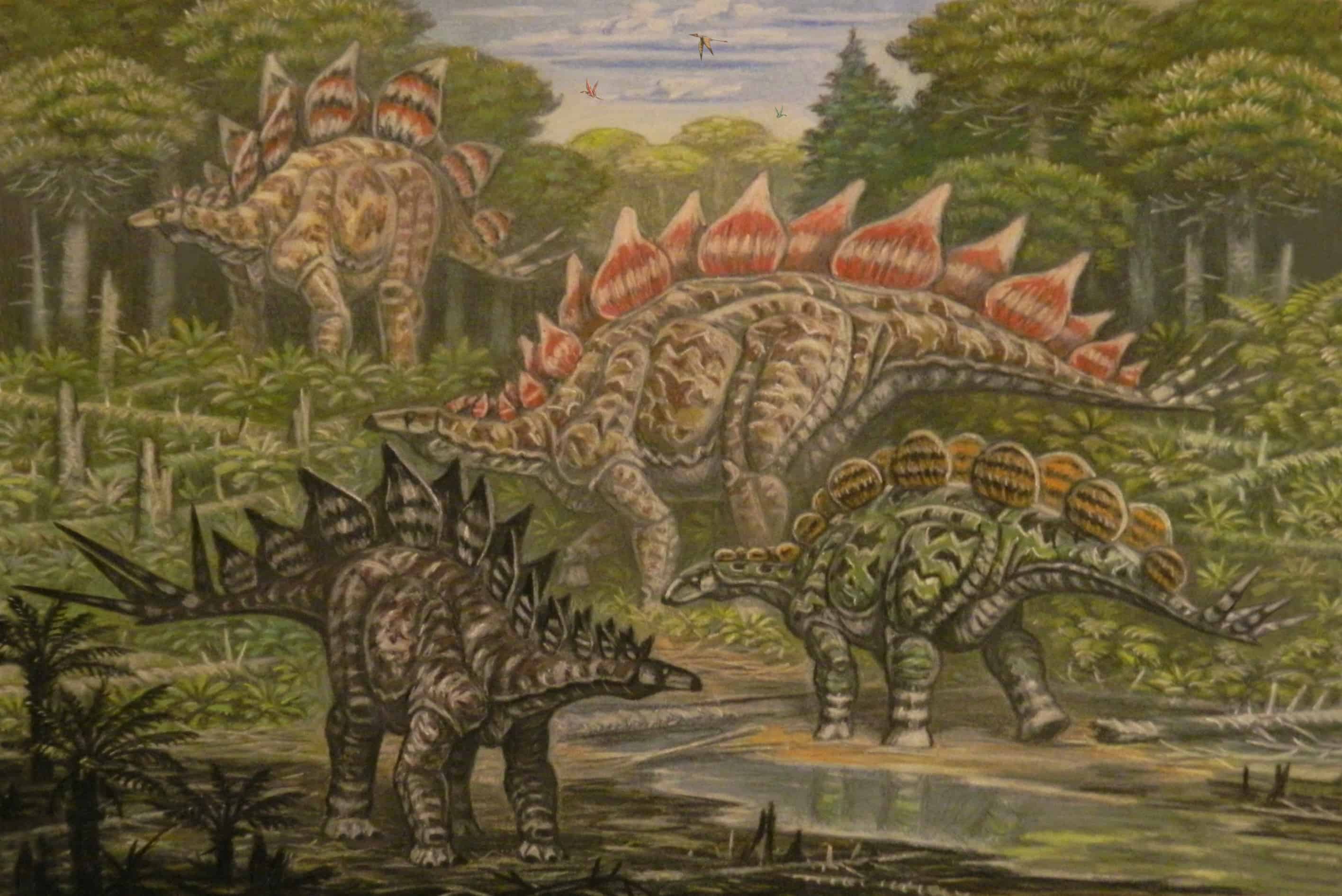
5. Alcovasaurus
Discovered in 1908 in the Morrison Formation of Wyoming, the Alcovasaurus lived in the United States during the Late Jurassic Period. It was initially classified as a stegosaurus, but researchers later identified it as a new species. In 2016, it was renamed Alcovasaurus.
The Alcovasaurus was a herbivore characterized by large spikes on its back. It also had two slender spikes located in its tail. Experts agree that the spikes were used as weapons. According to the fossils, the spikes could reach up to thirty-two feet in length. Heavy muscle mass in the Alcovasaurus’ legs and tail made it easy to swing their massive tails to hit opponents.
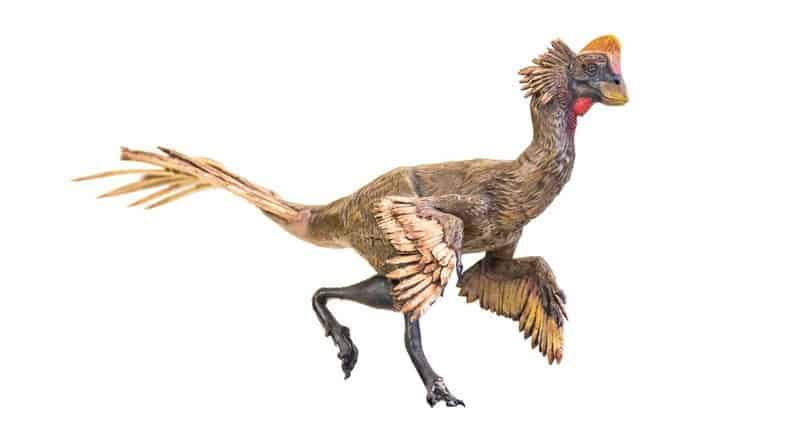
6. Anzu
The Anzu dinosaur was named after a Mesopotamian bird-like demon. This avian-esque dinosaur lived in North America during the Late Cretaceous period roughly 66 million years ago. Anzu was discovered in the Maastrichtian Hell Creek Formation in areas of South Dakota and Montana.
Anzu was most likely a herbivore or omnivore based on its beak and lower jaw. Its jaw allowed it to dine in plants, small animals, and eggs. While the Anzu may look like a bird, it was not, in fact, an avian dinosaur. This dinosaur had a large crest on the top of its head that was probably used to attract mates. Anzu dinosaurs were around eleven feet long and weighed roughly five hundred pounds.
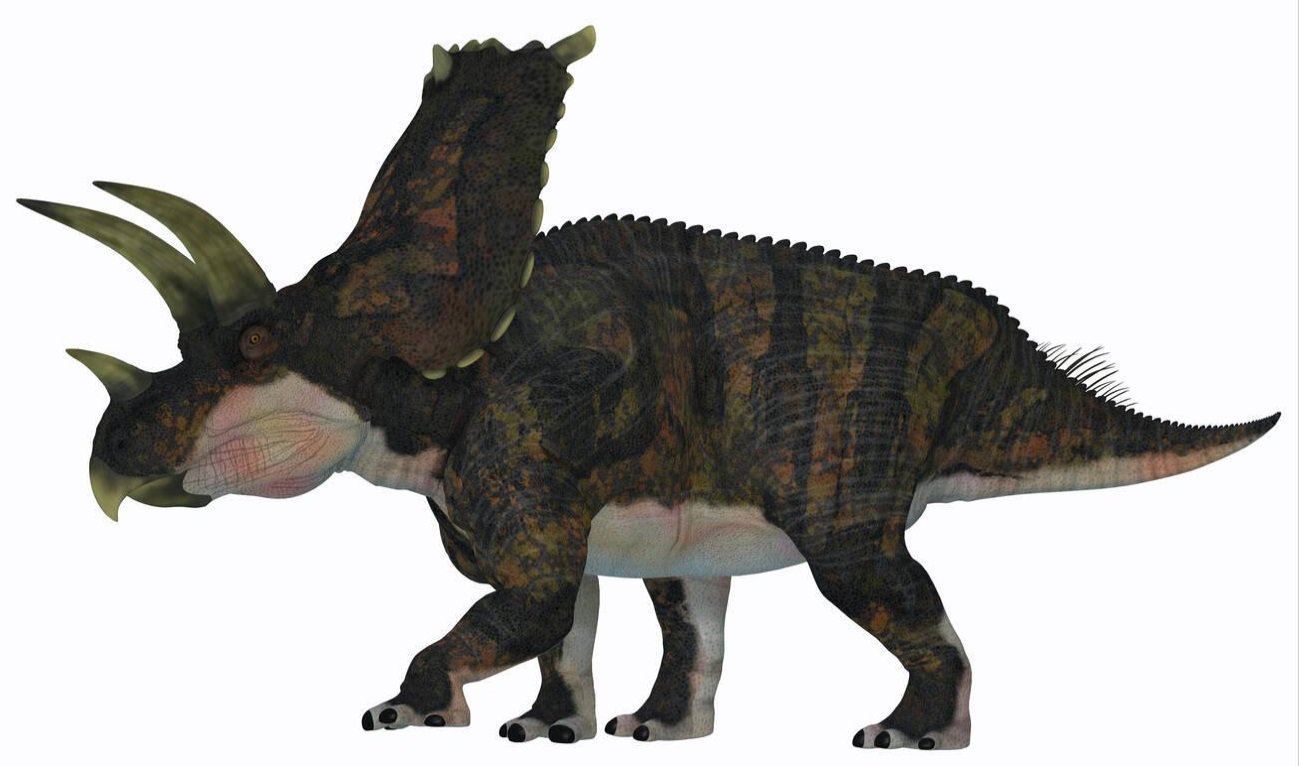
7. Bravoceratops
In 2013, a new genus of dinosaur was discovered in Big Bend National Park located in southwest Texas. Named Bravoceratops, this dinosaur lived in North America over 70 million years ago. It originated in the Late Cretaceous Javelina Formation.
This large dinosaur walked on four legs and was known for having two large horns protruding from its massive head. The Bravoceratops also had a small horn on its snout similar to a rhinoceros. These herbivores had skulls reaching seven feet long with horns that were more than three feet in length. Bravoceratops were quite large, weighing up to fifteen thousand pounds.
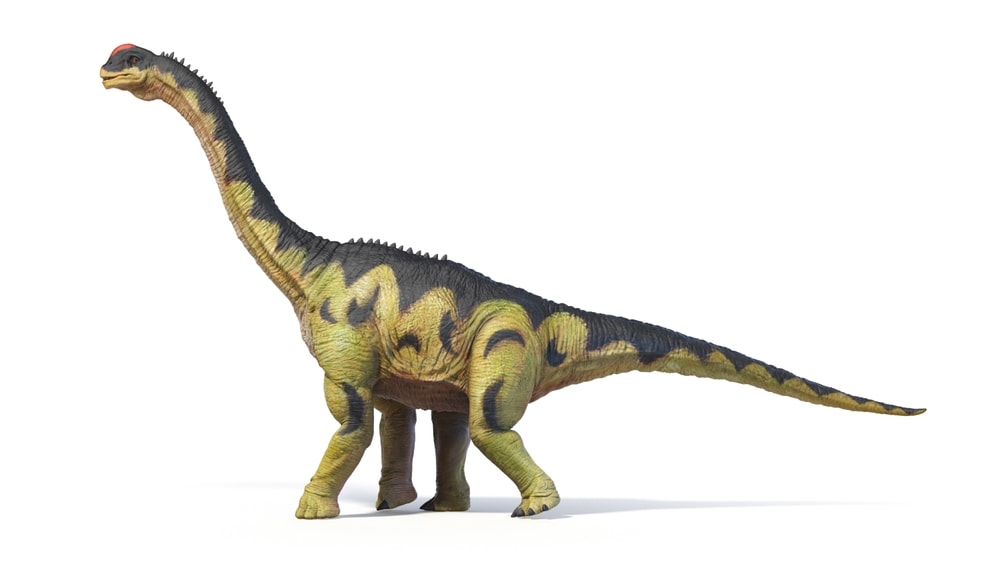
8. Camarasaurus
The most common giant sauropod found in North America is the Camarasaurus. These fossils were found in the Morrison Formation areas of Utah and Colorado. Researchers have estimated that the Camarasaurus dates back to the Late Jurassic Period and roamed North America around 155 million years ago.
The name Camarasaurus means Chambered Lizard, which refers to its spine, which has hollow chambers. That would help make this dinosaur lighter and have the ability to breathe easier. The shape of the Camarasaurus’ vertebrae leads to it having a strong, muscular neck. The Camarasaurus was a herbivore and had strong teeth for grinding foliage. They tended to eat different vegetation from other sauropods, so they had little competition for food.

9. Cathetosaurus
The Cathetosaurus lived in North America during the Upper Jurassic Epoch. It roamed the United States more than 93 million years ago. Cathetosaurus dwelled in a large river biome. More than 120 different Cathetosaurus specimens have been discovered since 1988.
Characterized by its long neck and large snout, the Cathetosaurus walked on all four legs and ate a plant-based diet. These large creatures weighed up to twenty thousand pounds. Even though their skulls were large and their limbs were short, their bodies seemed to balance well. Based on Cathetosaurus fossils that have been discovered by paleontologists, it appears that they reproduce by laying eggs.
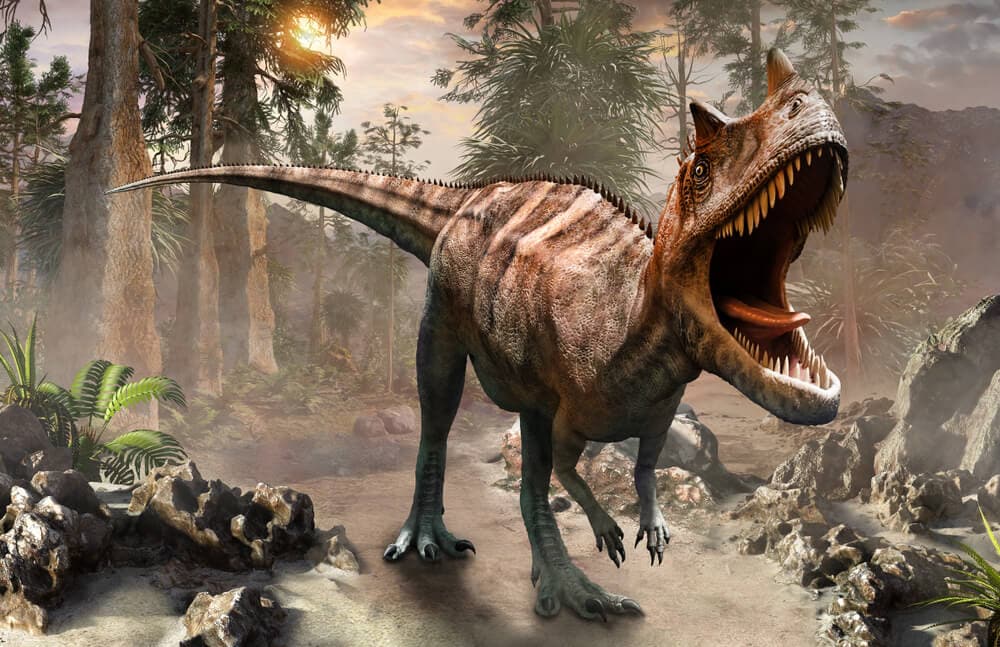
10. Ceratosaurus
Getting its name from the Greek words for horn and lizard, the Ceratosaurus was discovered in Garden Park, Colorado in 1884. This carnivorous dinosaur was present in North America during the Late Jurassic Period. The first Ceratosaurus skeleton found is the most complete fossil in existence. About sixteen separate Ceratosaurus specimens have been uncovered.
In addition to Colorado, Ceratosaurus fossils have been found in Texas, Utah, and even Portugal. Paleontologists dated the Ceratosaurus back roughly 161 million years ago. These dinosaurs walked on two legs and had short arms. Compared to many other species found in North America, the Ceratosaurus was medium-sized. They were around eighteen feet long with blade-like teeth and a prominent horn on their snout.
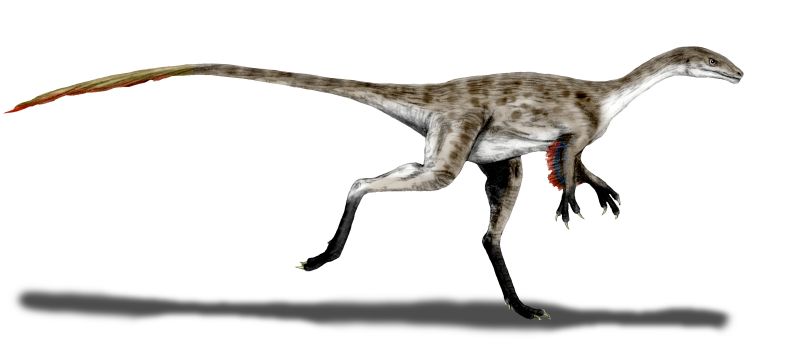
11. Coelurus
Coelurus is a member of a clade of animals that are more closely related to birds than dinosaurs. This dinosaur lived in North America during the Late Jurassic Period roughly 155 million years ago. The Coelurus gets its name from the Greek words for “hollow” and “tail.”
In 1879, the only known fossils of Coelurus were uncovered in Wyoming’s Morrison Formation. Paleontologists have determined that Coelurus was a small dinosaur, only weighing forty-four pounds. Coelurus was about eight feet long and just over two feet tall. This tiny theropod ate a carnivorous diet and was a fast hunter. Coelurus hunted insects, lizards, and small mammals.
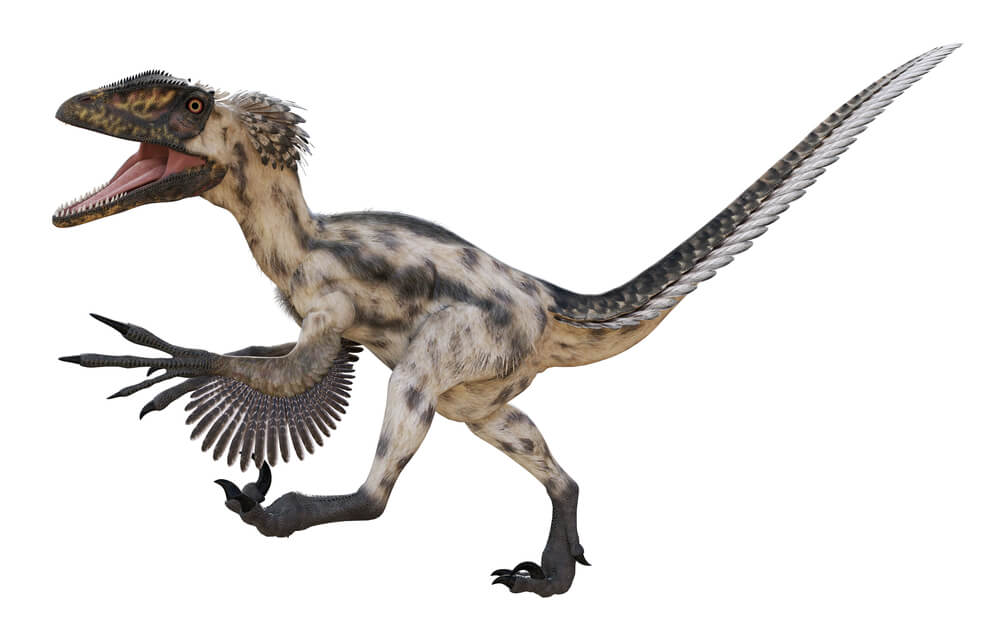
12. Deinonychus
One look at the Deinonychus, and you can see why its name means “terrible claw.” This dinosaur has large, curved claws on its hind feet, similar to other raptors. Discovered in Billings, Montana in 1931, Deinonychus lived in the United States during the Cretaceous Period roughly 115 million years ago.
Deinonychus fossils have been discovered in Utah, Wyoming, Montana, and Oklahoma. In the 1960s, paleontologists remarked that Deinonychus seemed to be closely related to modern birds. Deinonychus was covered in feathers and had wing-like arms. They walked on two legs and used their hind claws to kill and dismantle their prey. Fun Fact: The popular velociraptors from the movie Jurassic Park were inspired by the Deinonychus.
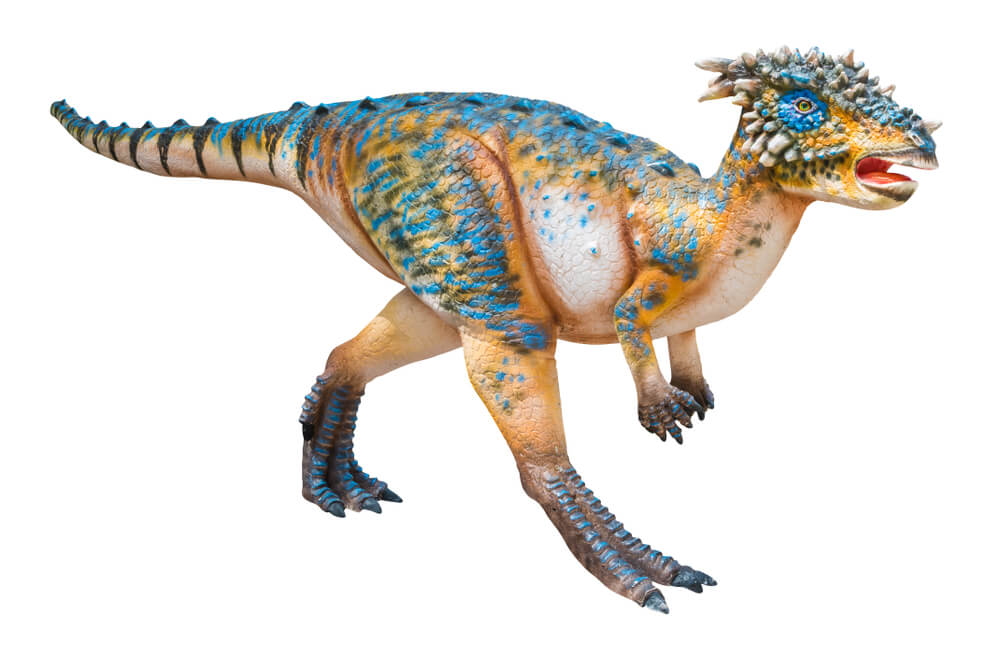
13. Dracorex
Dracorex was discovered in 2006 in the Hell Creek Formation in South Dakota. It gets its name from the famous Harry Potter book series. Its full name is Dracorex hogwartsia, which means “Dragon King of Hogwarts.” This herbivore lived during the Late Cretaceous Period, over 83 million years ago.
Paleontologists have discovered more than thirty different species of Dracorex. This dinosaur is a large, bipedal creature with a horned skull and long muzzle. Like many other dinosaurs from this period, it was a herbivore and reproduced by laying eggs. The Dracorex was roughly twenty-one feet long and four feet tall. It weighed around one hundred pounds, so it was a small yet fierce dinosaur.
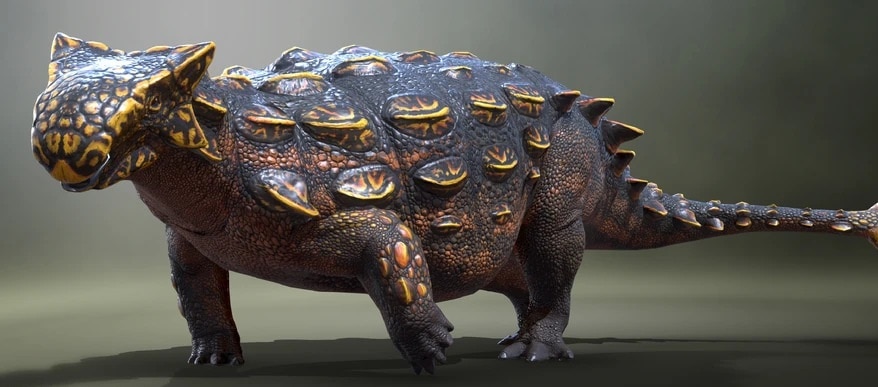
14. Dyoplosaurus
Dyoplosaurus was found in the lower levels of the Dinosaur Park Formation area of Alberta, Canada in 1924. Its name means “double-armored lizard.” Paleontologists believe this dinosaur lived in North America during the Late Cretaceous Period. Only one Dyoplosaurus specimen has been discovered.
Dyoplosaurus was approximately fifteen feet long and six feet wide. Its skull was fourteen inches across. This dinosaur walked on four legs and only ate plants. The Dyoplosaurus’ body was protected with armor, and it had a hard club at the end of its tail. Spikes ran down the Dyoplosaurus’ back with two more massive spikes located behind its neck.
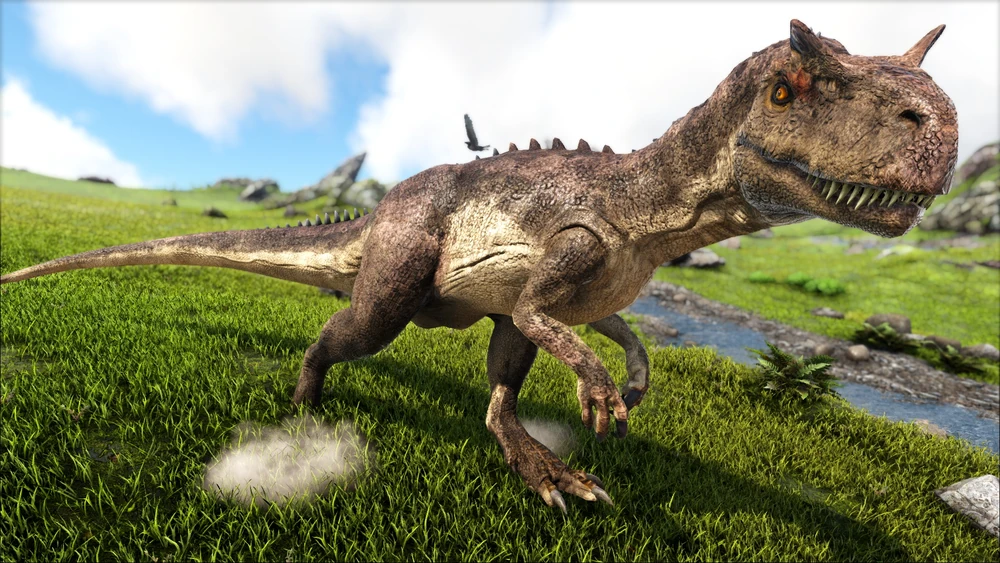
15. Epanterias
Epanterias is a type of theropod dinosaur that was discovered in the Morrison Formation of Garden Park, Colorado in 1878. This dinosaur was present in North America during the Late Jurassic Period. Paleontologists date Epanterias back 163 million years. The name comes from the Greek word for “buttressed,” referring to the shape of the Epanterias’ vertebrae.
This dinosaur was a carnivore and grew to be quite large. The Epanterias weighed up to 4,600 pounds and stretched more than forty-three feet long. Epanterias closely resembled the Tyrannosaurus Rex and hunted prey like them too. Like the T-rex, Epanterias walked on two legs and had short arms with large, sharp claws.
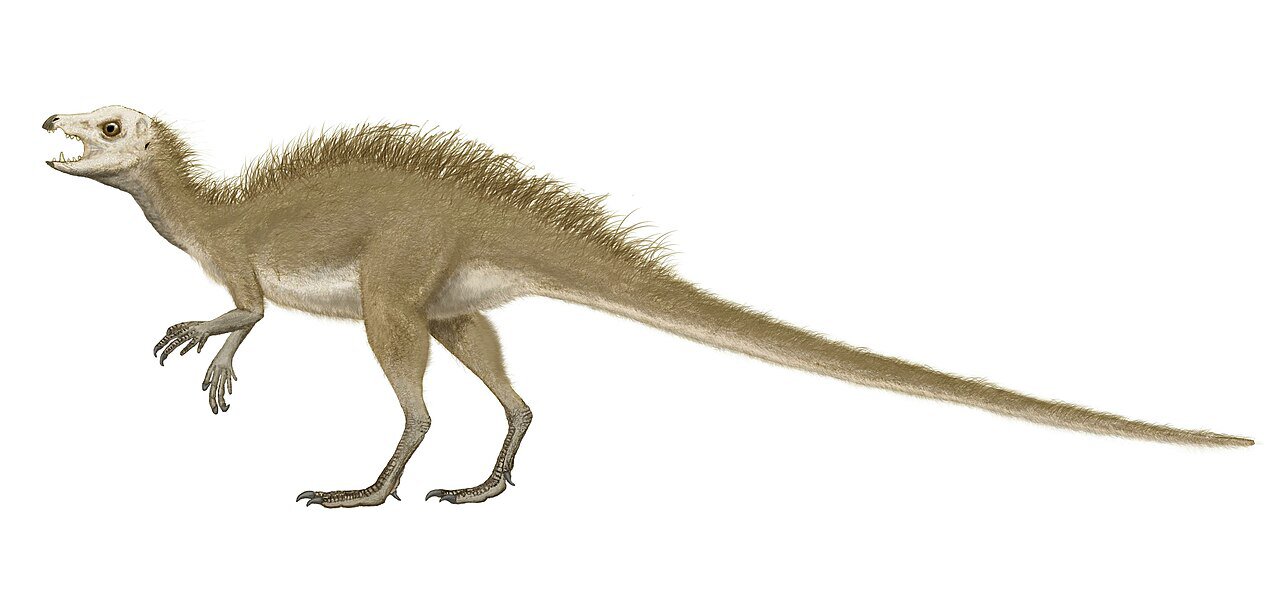
16. Fruitadens
Fruitadens fossils were first discovered in 2010. This dinosaur’s name means “Fruita tooth,” referencing Fruita, Colorado, where the fossils were initially found. Like many other dinosaur species, Fruitadens was located in the Morrison Formation of Colorado. Fruitadens Lived in North America during the Upper Jurassic Period more than 145 million years ago.
This is known as the smallest ornithischian dinosaur, which was a classification of dinosaurs that were small herbivores resembling birds. Adult Fruitadens was roughly thirty inches long and weighed less than two pounds. Paleontologists believe Fruitadens were omnivores. Their skull and teeth suggest they fed on some plants, insects, and other invertebrates.
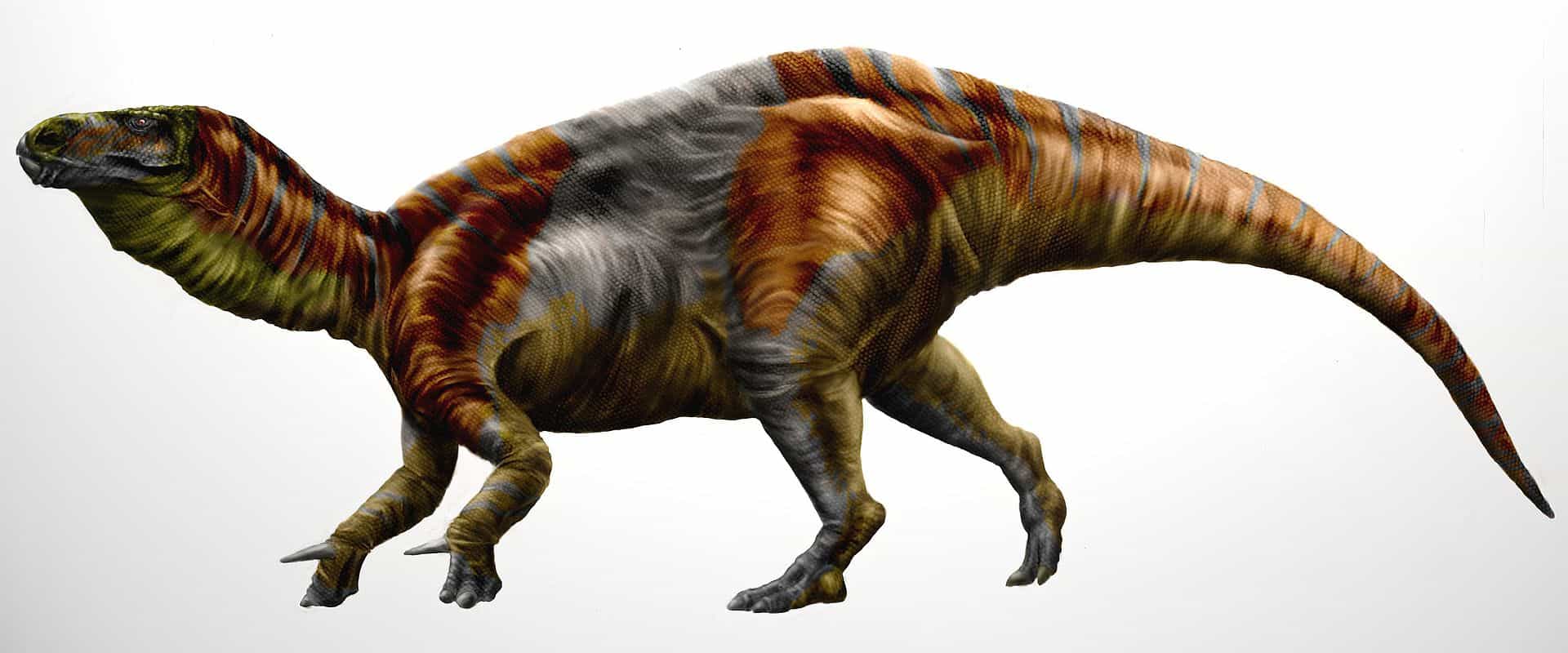
17. Glishades
In 2010, Glishades was discovered in the Two Medicine Formation of Montana. Glishades date back roughly 75 million years ago to the Late Cretaceous Period. Because its fossils were found in sedimentary strata, it was given the name Glishades, which roughly translates from Latin to “concealed in the mud.”
Since the only Glishades fossils that were found were jaw bones, not much is known about this species. Based on its teeth, it is known to be a herbivore. Paleontologists believe that the Glishades could potentially be a juvenile of another dinosaur genus, Bactrosaurus johnsoni. This type of dinosaur was found to have lived in Eastern China during the Late Cretaceous Period.
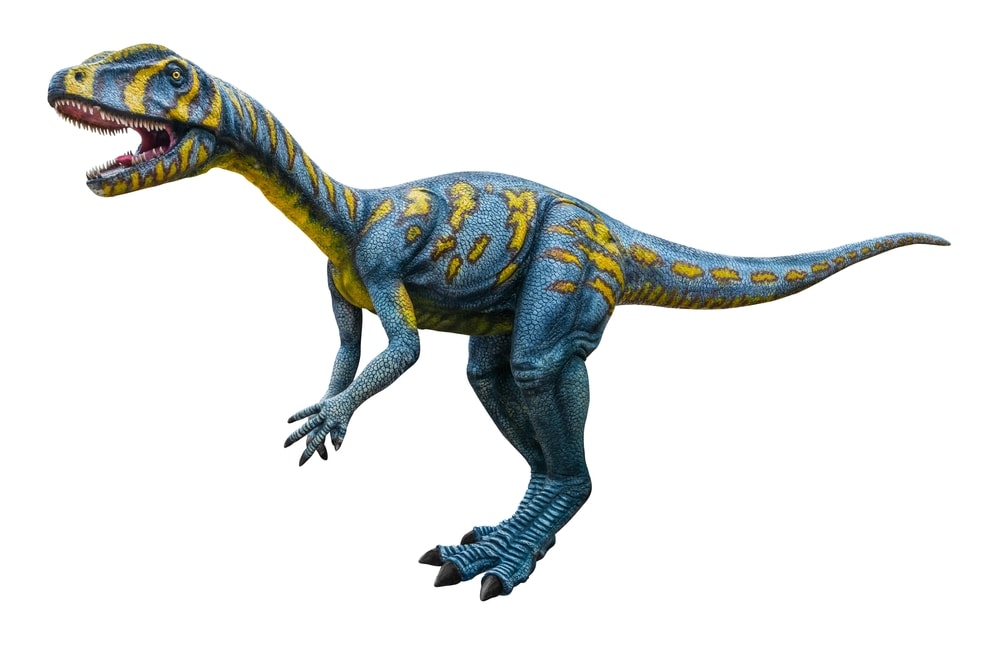
18. Gojirasaurus
Gojirasaurus was discovered in 1981 in the Cooper Canyon Formation in New Mexico. Experts place this dinosaur in the Late Triassic Period, approximately 228 million years ago. Its name translates to “Godzilla lizard.” Gojirasaurus was named after the movie character Godzilla; a giant lizard made famous in Japanese movies.
Gojirasaurus is known for being one of the Triassic Period’s largest meat-eaters. It stretched more than eighteen feet long and weighed up to 440 pounds. Many scientists believe that the Gojirasaurus fossils that have been found actually are immature bones of other species, but this dinosaur deserves its own classification.
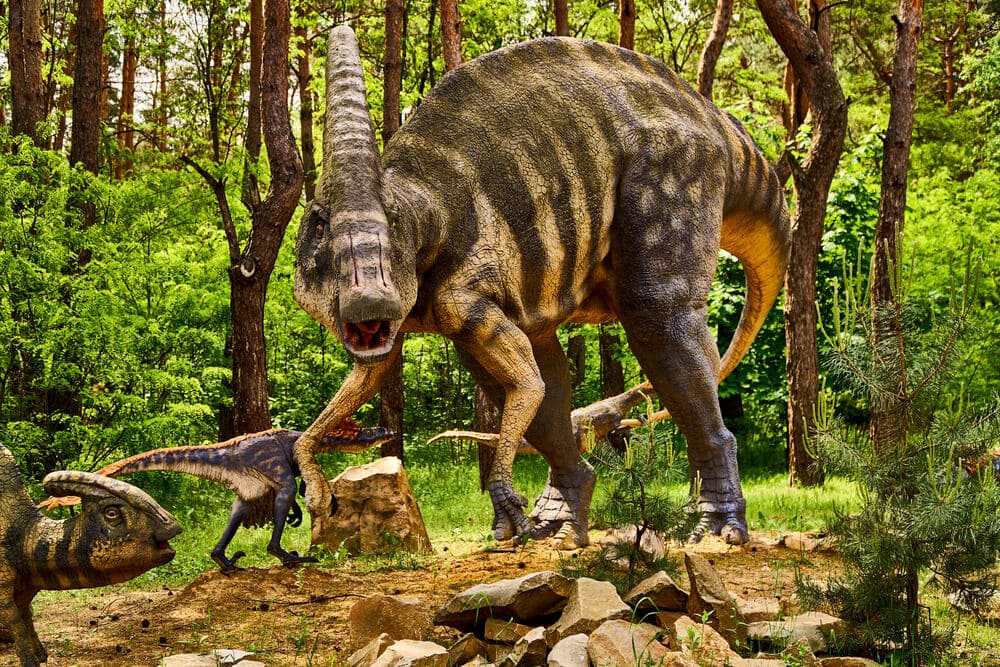
19. Hadrosaurus
Getting its name from the Greek words for “large lizard,” Hadrosaurus was present in North America in the Late Cretaceous Period. Hadrosaurus most likely lived here about 80 million years ago. The only Hadrosaurus specimen that has been found in a skeleton and part of a skull uncovered in the Woodbury Formation in New Jersey.
Hadrosaurus was discovered in 1858 and was the first North American dinosaur species identified from more than just teeth. This creature was the first dinosaur to have its skeleton mounted. The Hadrosaurus was a giant dinosaur, weighing more than four tons and being approximately thirty-two feet long. Teeth found by paleontologists indicate that the Hadrosaurus was an herbivore.
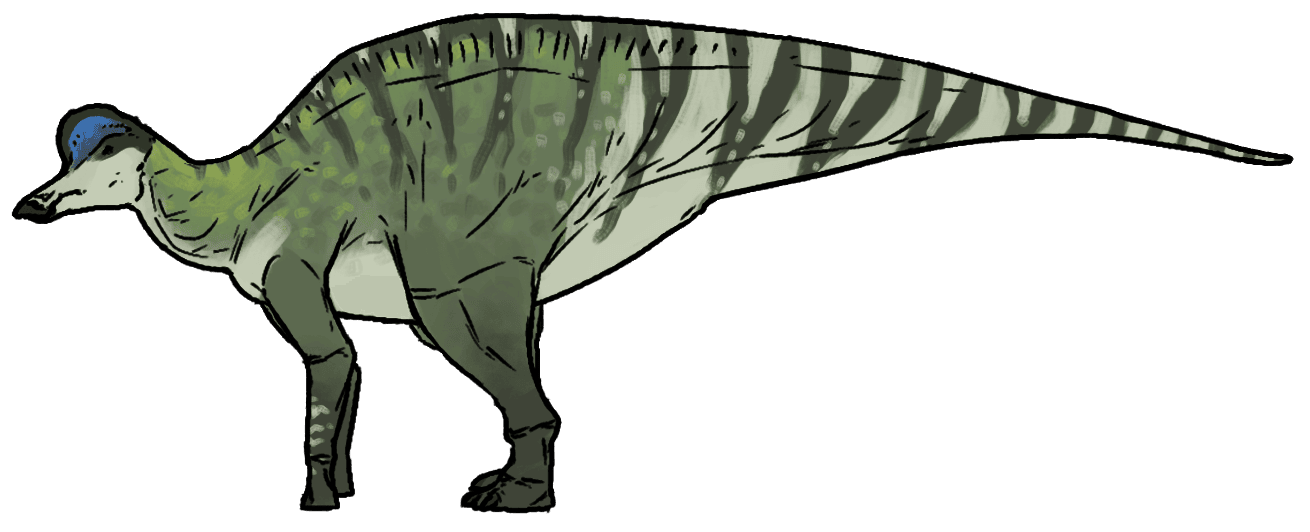
20. Hypacrosaurus
Hypacrosaurus’ name in Greek means “near the highest lizard.” It got its name because it was almost as large as the iconic Tyrannosaurus Rex. Hypacrosaurus was discovered in 1913 in Alberta, Canada. Paleontologists date Hypacrosaurus 67 million years back to the Late Cretaceous Period.
Until the discovery of eggs, hatchlings, and nests in the 1990s, Hypacrosaurus was known as an obscure genus. This dinosaur has a hollow crested skull and duckbill snout. Neural spines project from its vertebrae and are five to seven times taller than each vertebra. The Hypacrosaurus was roughly thirty feet long and weighed over four tons. Hypacrosaurus walked on two legs and four legs and stuck to a plant-based diet.
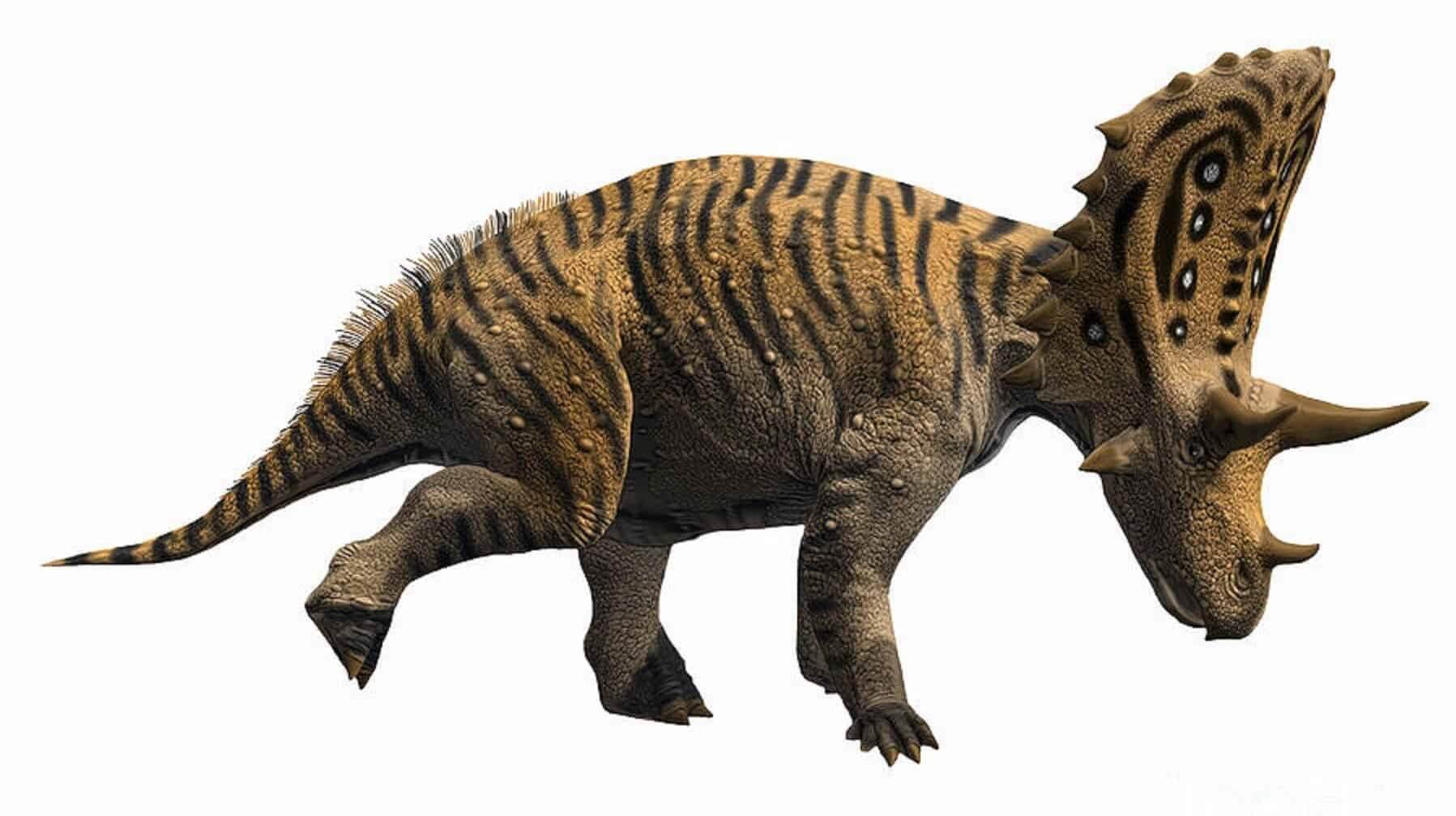
21. Judiceratops
This dinosaur roamed North America 78 million years ago during the Cretaceous Period. Judiceratops fossils were discovered in Montana in 2013. Belonging to the chasmosaurine ceratopsid dinosaur family, Judiceratops is the oldest known species in that family.
Another well-known chasmosaurine dinosaur is the Triceratops which closely resembles the Judiceratops. Judiceratops had a large skull with a parietal bone frill. Two large horns protruded from its head, and one smaller horn sat on its nose like a rhinoceros. Judiceratops walked on all four legs and enjoyed a herbivore diet. Other species the Judiceratops shared an environment with include amphibians and bony fish.
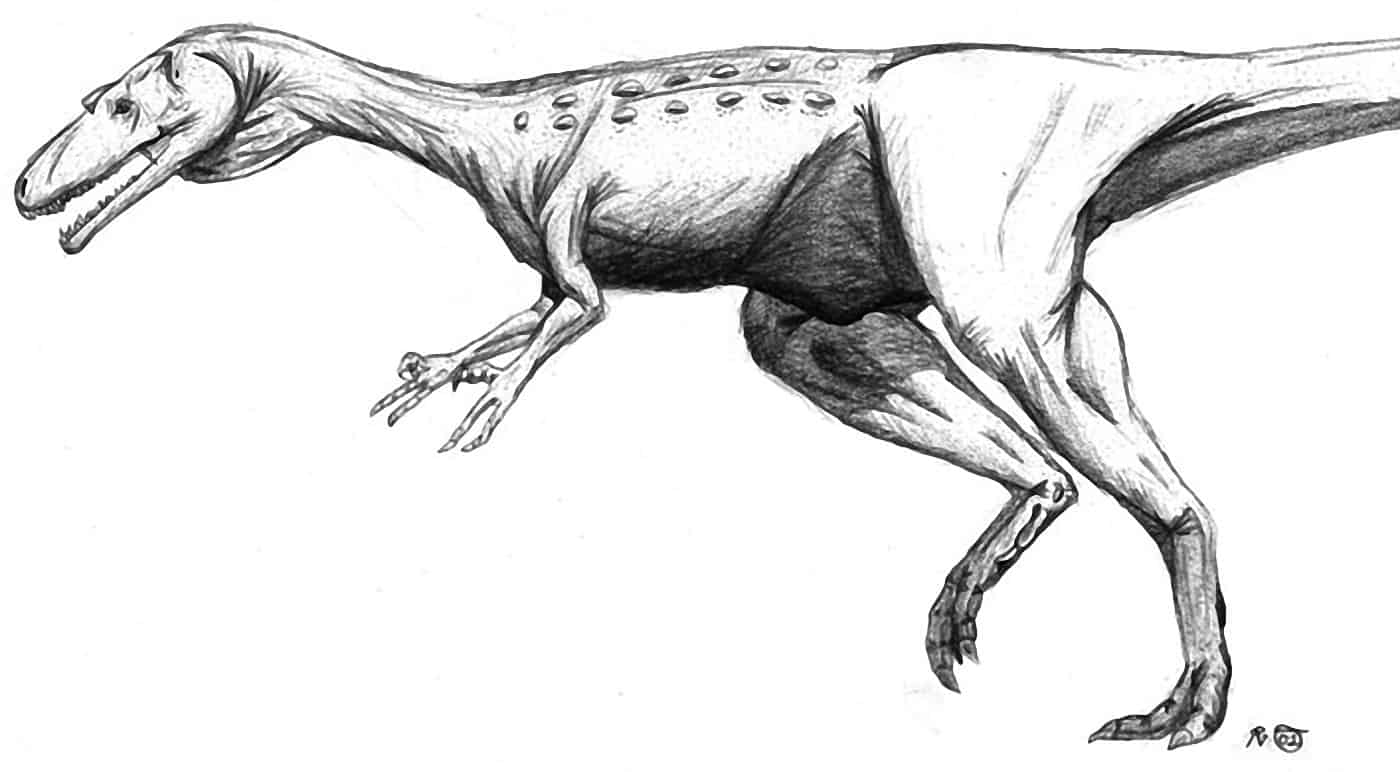
22. Kayentavenator
This small dinosaur was discovered in northeastern Arizona’s Kayenta Formation in 2010. Its name translates to “Kayenta hunter.” Kayentavenator was present in North America during the Early Jurassic Period, roughly 145 million years ago.
Kayentavenator dinosaurs were small and only stood about 1.6 feet high. They were carnivores, so they used their small stature to their advantage when hunting prey. The Kayentavenator had long back legs with sharp claws and smaller arms. Paleontologists believe that the Kayentavenator thrived in a river environment with a pleasant seasonal climate. They shared their space with theropods, bony fish, salamanders, frogs, and other reptiles.
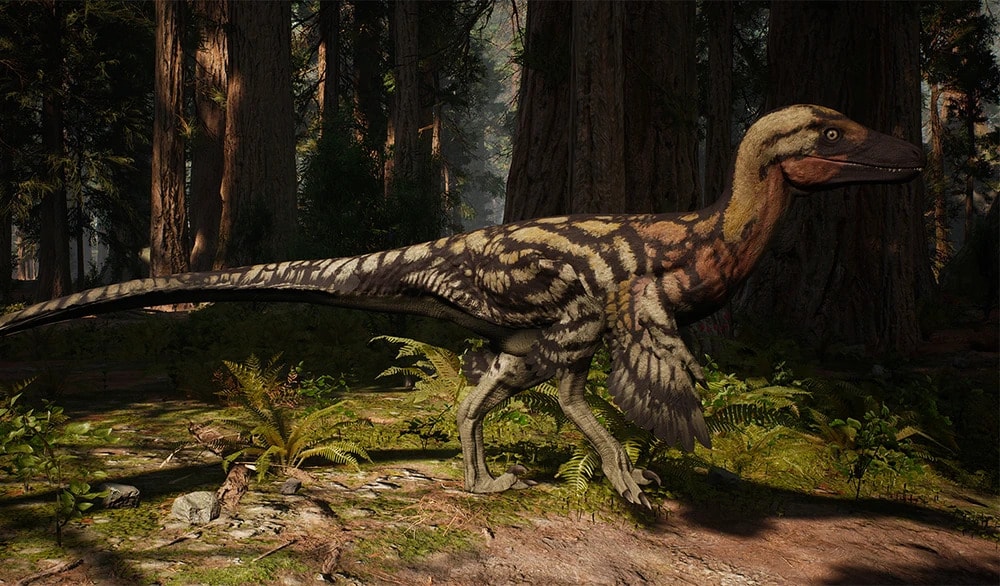
23. Latenivenatrix
Latenivenatrix is a member of the troodontid family. Its name means hiding huntress, and although remains were discovered in 1969, Latenivenatrix was given its name in 2017. This dinosaur was found in Alberta, Canada’s Dinosaur Mountain Park.
As a troodontid, the Latenivenatrix is a small, bird-like dinosaur. Its body can reach up to twelve feet in length, and its skull can be eighteen inches long. Out of all the troodontids, Latenivenatrix is by far the largest. Latenivenatrix has small, wing-like arms, but it is unable to fly. It walks on two legs and is somewhat of an omnivore, though it mostly dines on plants.
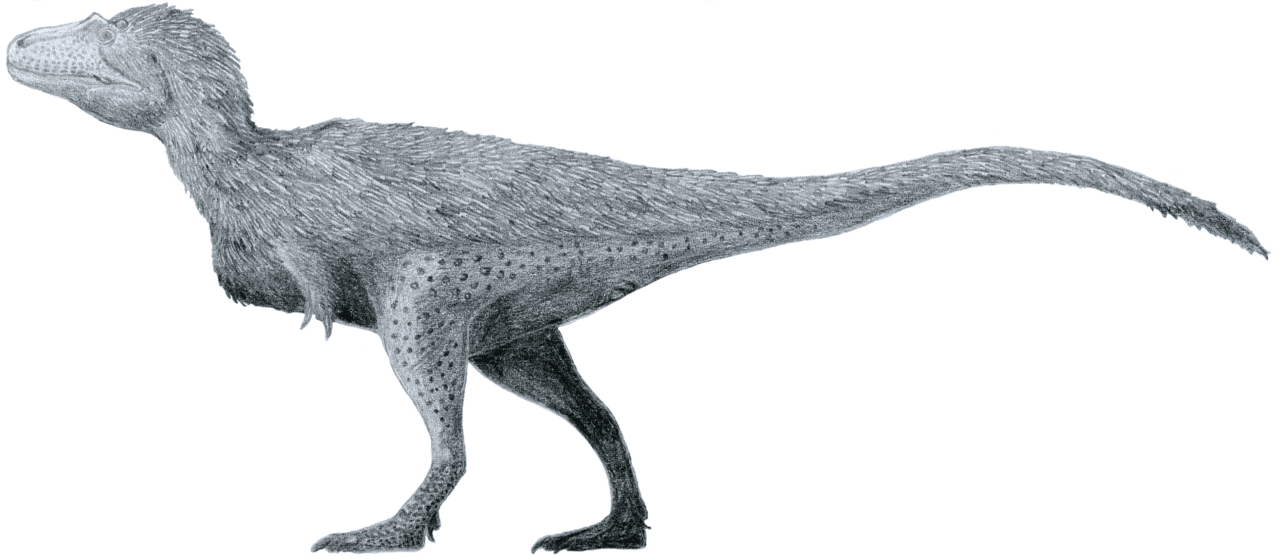
24. Lythronax
Lythronax was discovered in 2009 at the Grand Staircase-Escalante National Monument in southern Utah. This theropod lived in North America roughly 80 million years ago during the Late Cretaceous Period. Its name translates from Greek to mean “gore king.”
Lythronax was built similar to the Tyrannosaurus Rex. Its eyes both faced the front, which gave it excellent depth perception. This dinosaur was about twenty-four feet long and weighed up to 5,500 pounds. It had a large skull that was filled with many sharp teeth. The Lythronax’s teeth were serrated and robust, making them ideal for slicing off meat, crushing bone, and causing significant damage. It was excellent at hunting and could cut large chunks of flesh and bone from its prey, then swallow it whole.
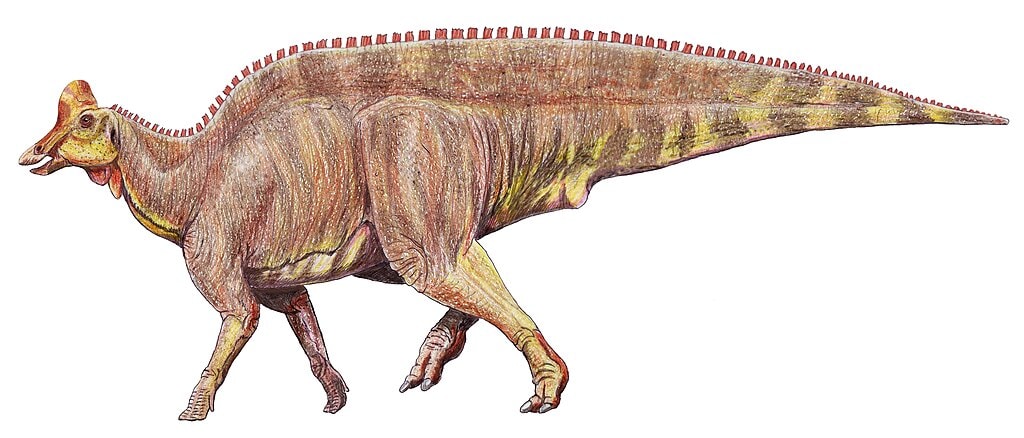
25. Magnapaulia
Discovered in 1981 in Baja California, Magnapaulia gets its name from Latin words meaning “broad tail.” This dinosaur was believed to have lived in the water based on its size and its tail shape. Magnapaulia had a tall and narrow tail that was most likely used to help it swim. Weak hip bones indicate that it would not have been able to support itself on dry land.
The Magnapaulia dinosaur was enormous, reaching up to fifty feet long and weighing over twenty-five tons. Magnapaulia’s back featured a tall crest along its spine that was roughly four times as tall as its vertebrae. This crest allowed Magnapaulia to move well in the water and stay afloat. Magnapaulia was a herbivore and enjoyed dining on plants.
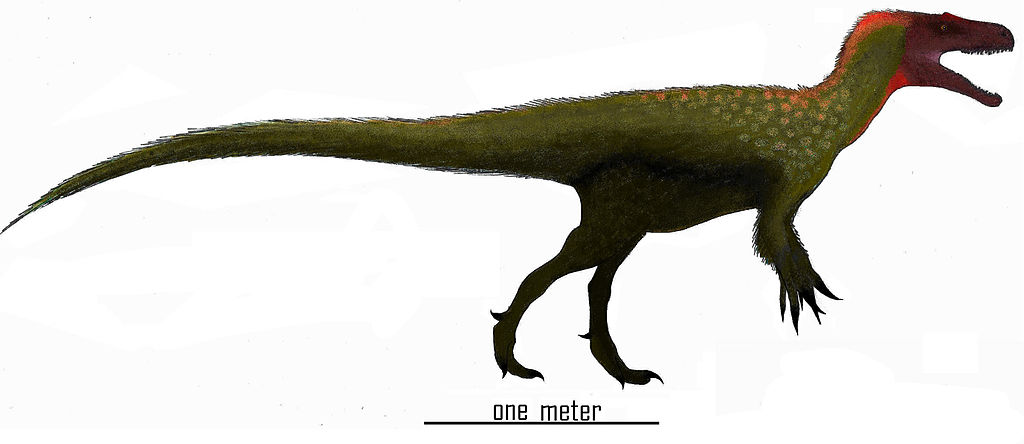
26. Marshosaurus
Marshosaurus was discovered in the Morrison Formation of Utah and Colorado in the 1960s. Classified as a theropod, this medium-sized dinosaur lived in North America during the Late Jurassic period. Like several other dinosaurs found in North America, Marshosaurus walked on two legs and had short arms.
Paleontologists estimate that Marshosaurus was roughly fifteen feet long and weighed nearly five hundred pounds. It had a large skull that was more than two feet long. Marshosaurus was a carnivore and excellent at hunting. This dinosaur lived in a wet environment in areas rich in fungi, green algae, ferns, and other vegetation.
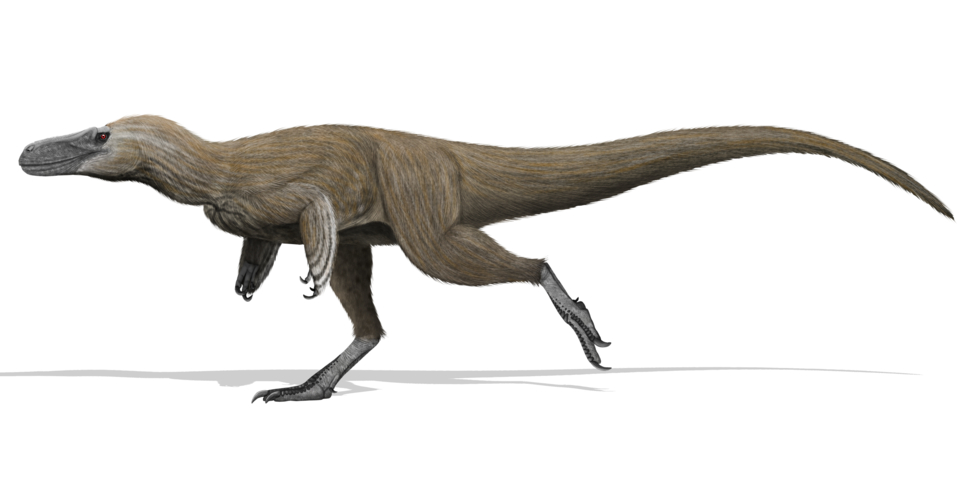
27. Moros
Moros is a part of the Tyrannosaurus family, and it lived in Utah during the Late Cretaceous Period. It was discovered in 2013 but named in 2019 by paleontologists. This dinosaur is known as the oldest Tyrannosaurus found from the Cretaceous period.
The Moros dinosaur’s name comes from the Greek term Moros, which means impending doom, referring to how the Tyrannosaurus family was established in North America. This dinosaur was quite small, reaching a weight of around 172 pounds. They had slender foot bones with sharp claws, making them fast and excellent at hunting. Like other Tyrannosaurus dinosaurs, Moros was a carnivore.
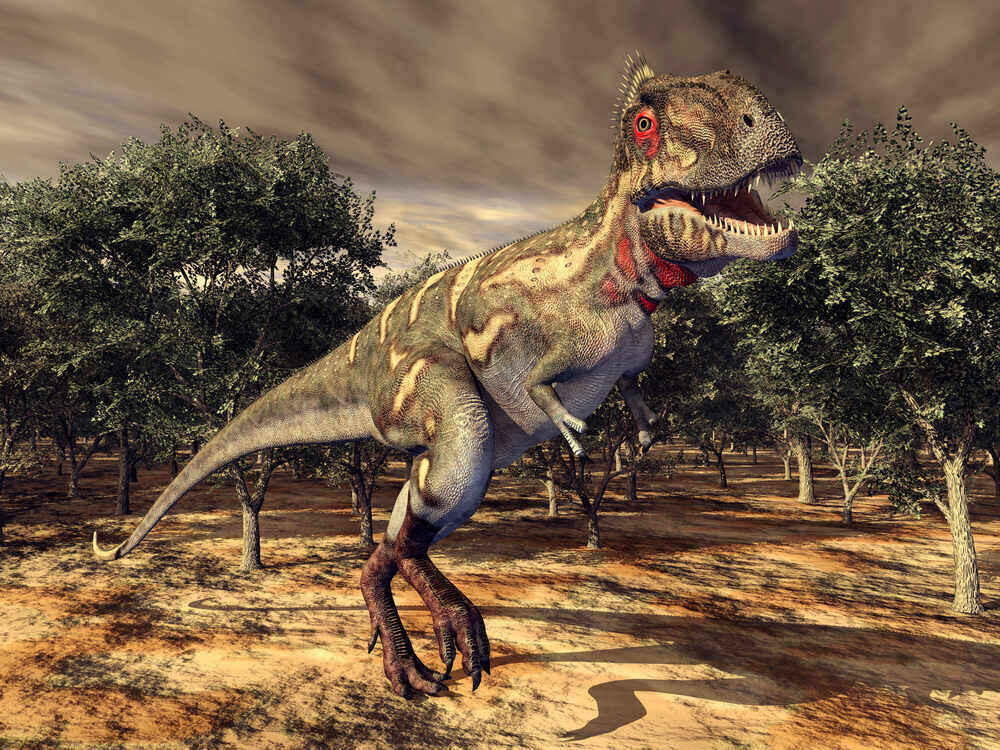
28. Nanotyrannus
Just two specimens of Nanotyrannus have been discovered. Some paleontologists believe that Nanotyrannus is a juvenile species of the Tyrannosaurus rex. Nanotyrannus was found in northwest Montana in 1942. This dinosaur was the last non-avian dinosaur to walk the Earth.
Nanotyrannus differs from the Tyrannosaurus rex in that its arms and hands are larger than the iconic dinosaur. Additionally, its chest bones are built much differently than the T. rex. The Nanotyrannus has more teeth and does not have fused bones like the Tyrannosaurus rex. Compared to other dinosaurs, Nanotyrannus was quite large. It weighed about a ton and was close to twenty feet long.
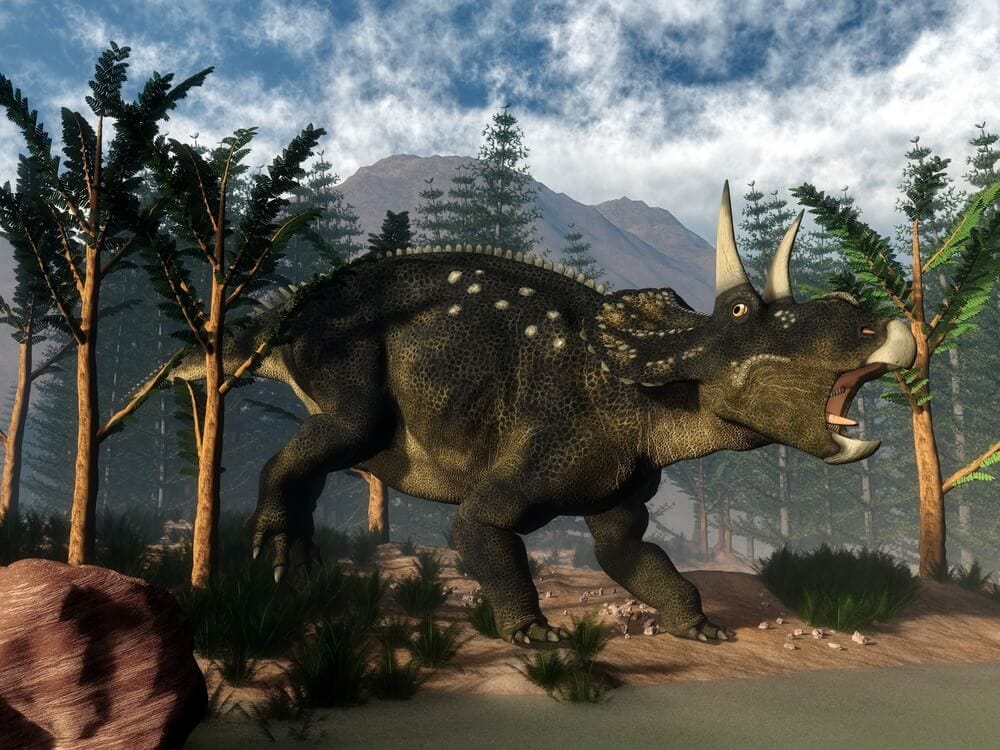
29. Nedoceratops
The only evidence of Nedoceratops is a single skull uncovered in 1868 in Wyoming. Paleontologists believe that this dinosaur originated in the Late Cretaceous Period. An intense debate has been ongoing about this dinosaur. Many experts consider it is its own species, but others think that Nedoceratops is a growth stage of the Triceratops.
Although Nedoceratops resembles the Triceratops, there are some distinctions. Instead of having a nasal horn, Nedoceratops has a rounded snout. Its skull is larger than that of a Triceratops, but it has a shorter face. Nedoceratops has a frill, but its frill has large holes which some paleontologists think are from being gored by other dinosaurs. Like its relative Triceratops, Nedoceratops are herbivores.
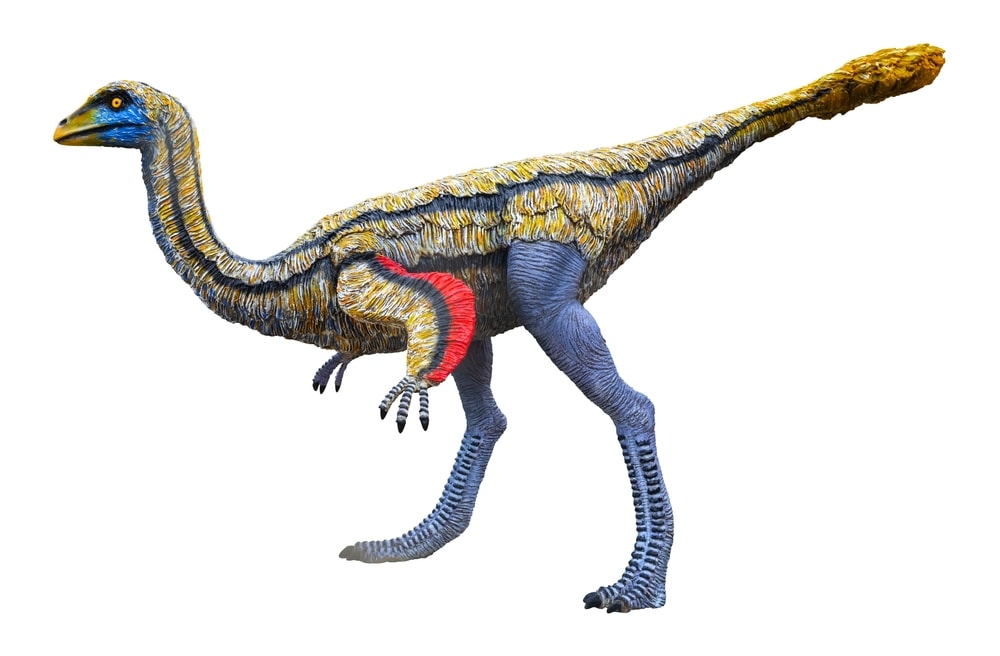
30. Ornithomimus
Ornithomimus was discovered in the Denver Formation of Colorado in 1890. This theropod roamed North America during the Late Cretaceous Period more than 66 million years ago. The Ornithomimus dinosaur had long legs, long necks, and bird-like arms.
Ornithomimus was covered in feathers and had beaked skulls without any teeth. This dinosaur resembled the modern-day ostrich. Because they didn’t have any teeth, paleontologists believe Ornithomimus ate an omnivorous diet but favored plants. Their long limbs and hollow bones made them fast runners. Ornithomimus’ hands were curved, resembling a sloth’s claws, which made them ideal for hooking onto branches while they fed.
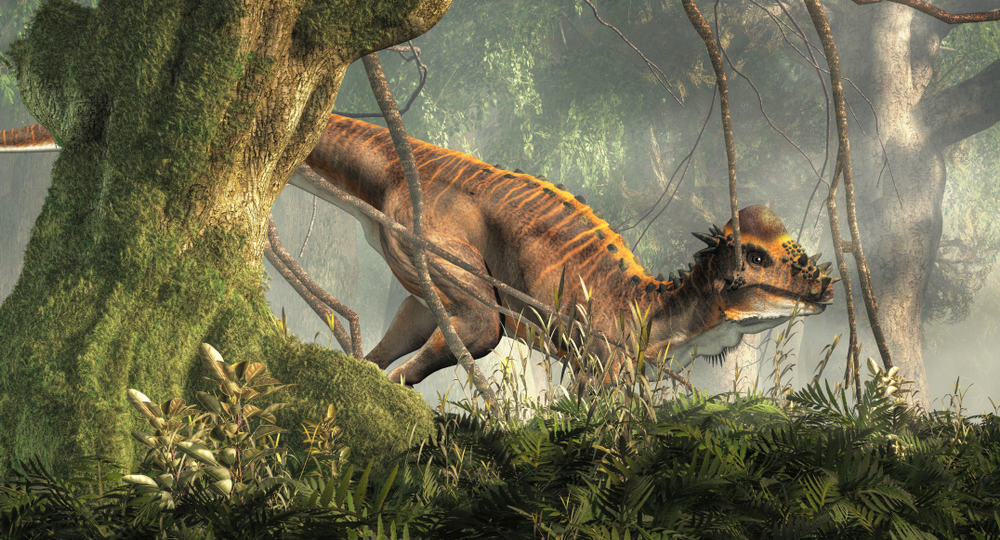
31. Pachycephalosaurus
This dinosaur gets its name from the Greek words for “thick-headed lizard.” Remains of Pachycephalosaurus were found as far back as 1859 in Wyoming, Montana, and South Dakota. The Pachycephalosaurus lived in North America during the Late Cretaceous Period.
Although only Pachycephalosaurus skulls have been discovered, paleontologists have a rough idea of what the dinosaur looked like. Its most popular feature is the bony dome on its head that could be up to ten inches thick. This feature was ideal for protecting the dinosaur’s small brain. Additional protection was provided by short spikes on the back of the head. Pachycephalosaurus had a small muzzle with tiny teeth, perfect for eating its herbivorous diet.

32. Pectinodon
Pectinodon roamed North America more than 66 million years ago during the Late Cretaceous Period. The only evidence of this dinosaur that paleontologists have discovered is its teeth. The name Pectinodon comes from the Latin words for “comb” and “tooth,” referring to the teeth’s serrated edges.
This biped was believed to have strong hind legs and weaker forearms. Pectinodon was a member of the troodontid family like Latenivenatrix, making it a small, bird-like dinosaur. It was roughly seven feet long and three feet tall. Experts believe this carnivore weighed about 110 pounds. Their teeth resemble those of an iguana, making them ideal for chewing meat.
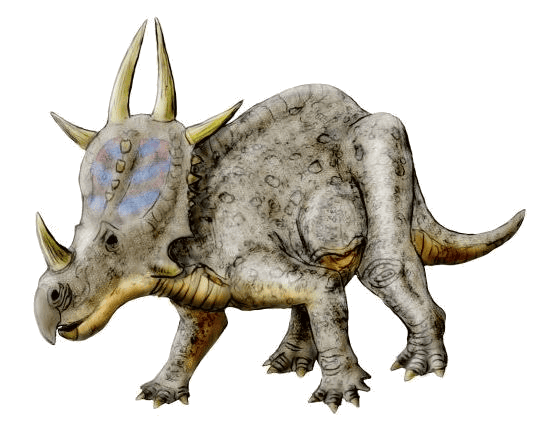
33. Rubeosaurus
Rubeosaurus gets its name from the Greek words “bramble lizard.” This dinosaur was discovered in the upper Two Medicine Formation in Montana. The Rubeosaurus lived in North America during the Late Cretaceous Period, more than 74 million years ago.
The first Rubeosaurus fossils were found in 1928. This giant dinosaur was nearly twenty feet long and weighed up to six tons. This dinosaur walked on all four legs and ate a plant-based diet. Rubeosaurus resembled the Triceratops in that it had a large skull with a frill and horns. Its snout featured a prominent horn that was several feet long.
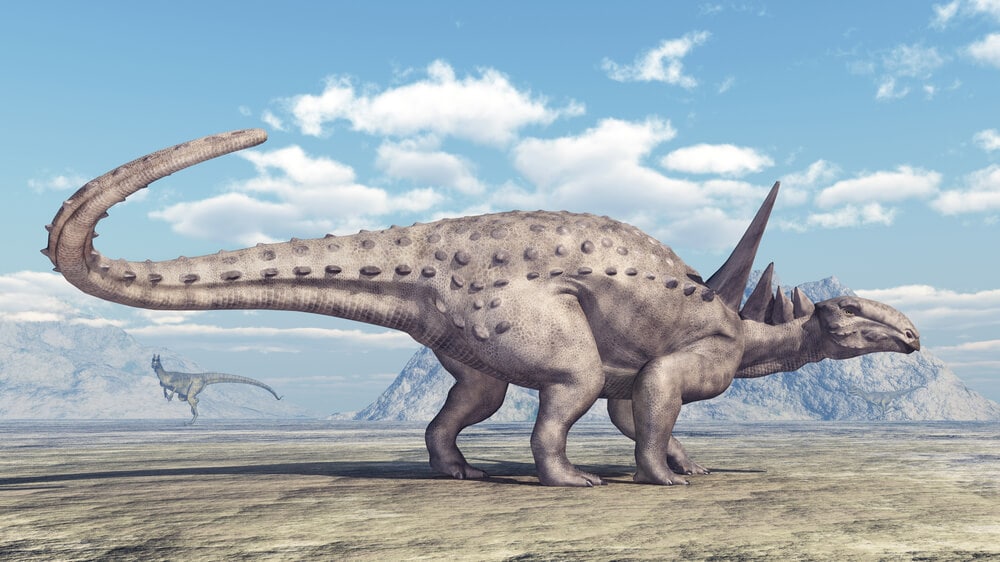
34. Sauropelta
Sauropelta, which means “lizard shield,” is a nodosaurid dinosaur from the Early Cretaceous period. This dinosaur lived in North America during the Early Cretaceous Period nearly 110 million years ago. Many Sauropelta fossils have been found in the United States, especially in areas of Utah, Wyoming, and Montana.
Sauropelta is unique because its long tail accounts for roughly half of its body length. It can measure up to around seventeen feet long. The Sauropelta is a heavy creature, weighing more than three thousand pounds. This dinosaur is so massive because of bony armor that covers its body, including large spikes on its neck. Sauropelta thrived in areas that had a warm climate throughout the year and stuck to a herbivorous diet.
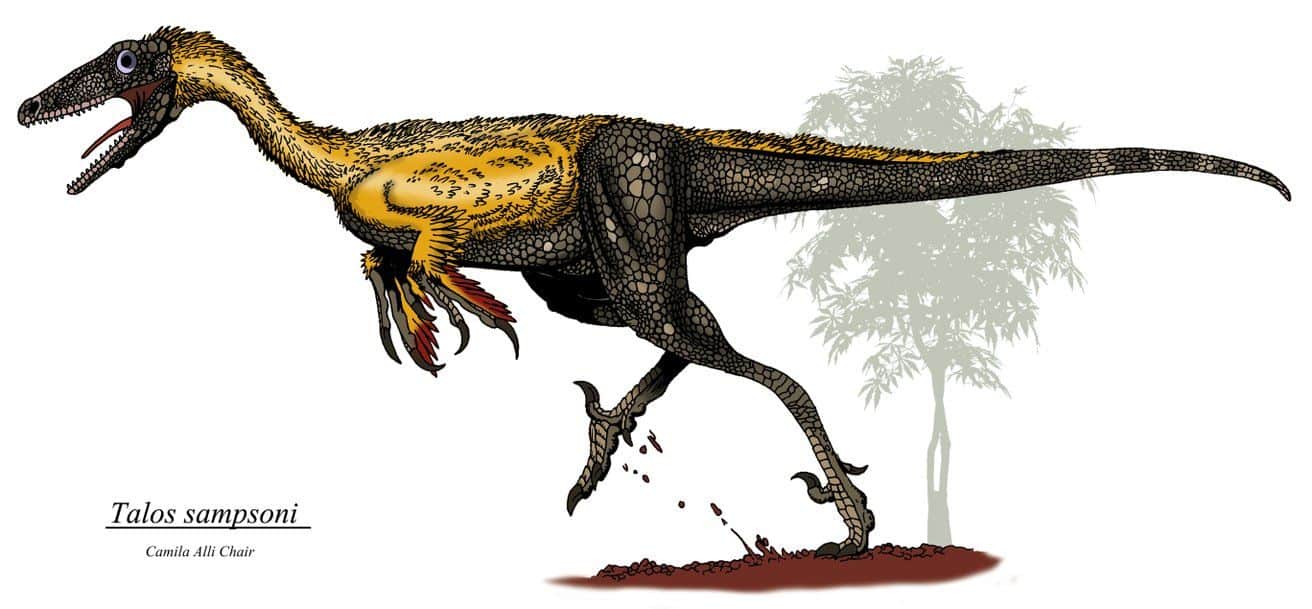
35. Talos
Also known as Talos sampsoni, this dinosaur is a troodontid that lived in North America during the Late Cretaceous Period. Talos lived here roughly 76 million years ago. This dinosaur was discovered in Utah in 2008.
Like other troodontids, Talos was small, graceful, and bird-like. They had thin snouts with a large number of teeth. Talos’ feet had sharp claws, and their arms were wing-like. These dinosaurs were roughly six feet long and weighed over eighty pounds. Based on their teeth and sickle-like claws, Talos was a carnivore and a swift killer. Talos lived in wet, humid climates surrounded by rich, diverse fauna.
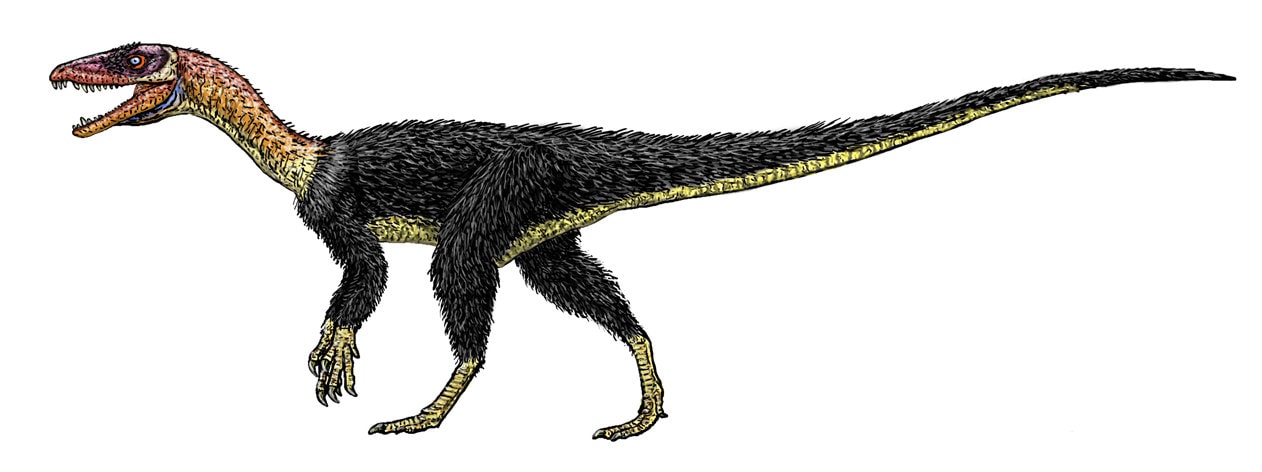
36. Tawa
The Tawa was named after the Pueblo sun god and lived in North America during the Late Triassic Period. Fossils were discovered in New Mexico in 2004, but it was formally classified in 2009. The discovery of Tawa supports the theory that the earliest dinosaurs originated in what’s now South America and migrated from there around the world.
The Tawa dinosaur was just over eight feet long and weighed about thirty-three pounds. In comparison with other early dinosaurs, Tawa was much more slender. Tawa thrived in a warm climate with heavy precipitation. Their small stature made them fast and adept at hunting. Tawa had air sacs surrounding their necks and brains, much like modern birds.
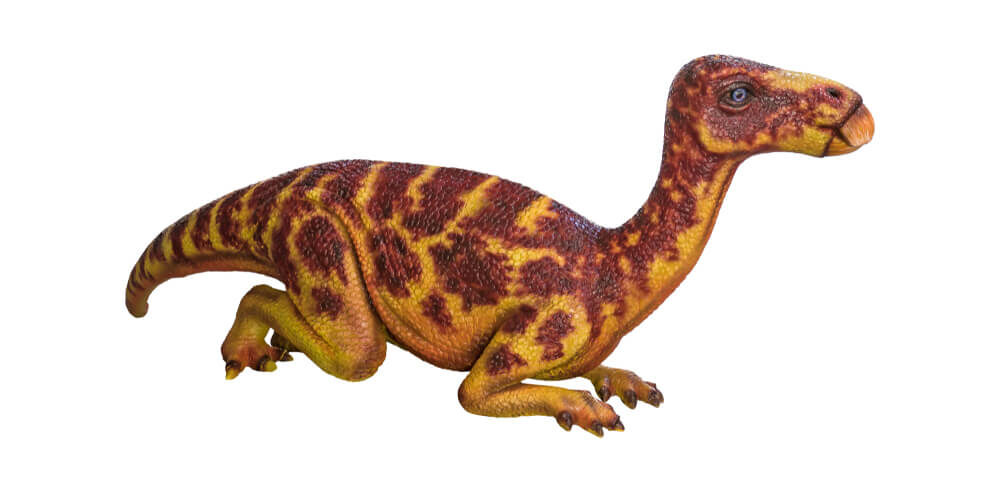
37. Theiophytalia
Roughly 112 million years ago, Theiophytalia lived in North America during the lower Cretaceous period. This dinosaur was discovered in the Morrison Formation of Colorado in 1878. Theiophytalia gets its name from the Greek words for “divine” and “garden.” The park where the only Theiophytalia fossil was found is known as Garden of the Gods.
Theiophytalia is an Iguanodontian dinosaur, one of the first species to be discovered. Because of the various dinosaur species in this clade, Iguanodontia is one of the most known classifications of dinosaurs. This dinosaur has a broad, long snout and a bulbous lower jaw. They walked on their stout back legs and had shorter, thinner arms. Theiophytalia dinosaurs were herbivores.

38. Triceratops
The most well-known dinosaur on this list has to be the Triceratops. This dinosaur lived in North America during the Late Cretaceous Period roughly 68 million years ago. The Triceratops gets its name from the Ancient Greek words for “three-horned face.” Triceratops is unique in that it is one of the last known dinosaur species that are not related to birds.
The first Triceratops fossil was uncovered in Denver, Colorado in 1887. Triceratops is known for the large frill and three horns on the top of its skull. Its stocky four-legged body closely resembles the modern rhinoceros. These large animals could be upwards of thirty feet long and ten feet tall. Triceratops was extremely heavy, weighing between 13,000 and 26,000 pounds. Because their heads were low to the ground, paleontologists believe that these herbivores feasted on low-growing plants.
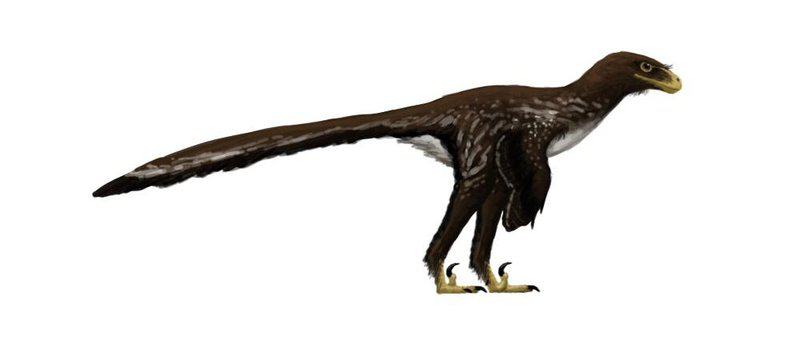
39. Zapsalis
Discovered in the Judith River Formation area of Montana in 1876, Zapsalis was a theropod dinosaur. This species lived in North America approximately 75 million years ago. Evidence of the Zapsalis was found only in teeth fossils.
The name Zapsalis comes from the Greek words for “thorough” and “pair of scissors.” The Zapsalis teeth found in Colorado are classified by vertical grooves, straight rear edges, and a round shape. Based on these teeth, Zapsalis had stout, boxy skulls and heavy legs. These dinosaurs were built for strength more than speed. Their sharp, powerful teeth also indicate that Zapsalis were carnivores.
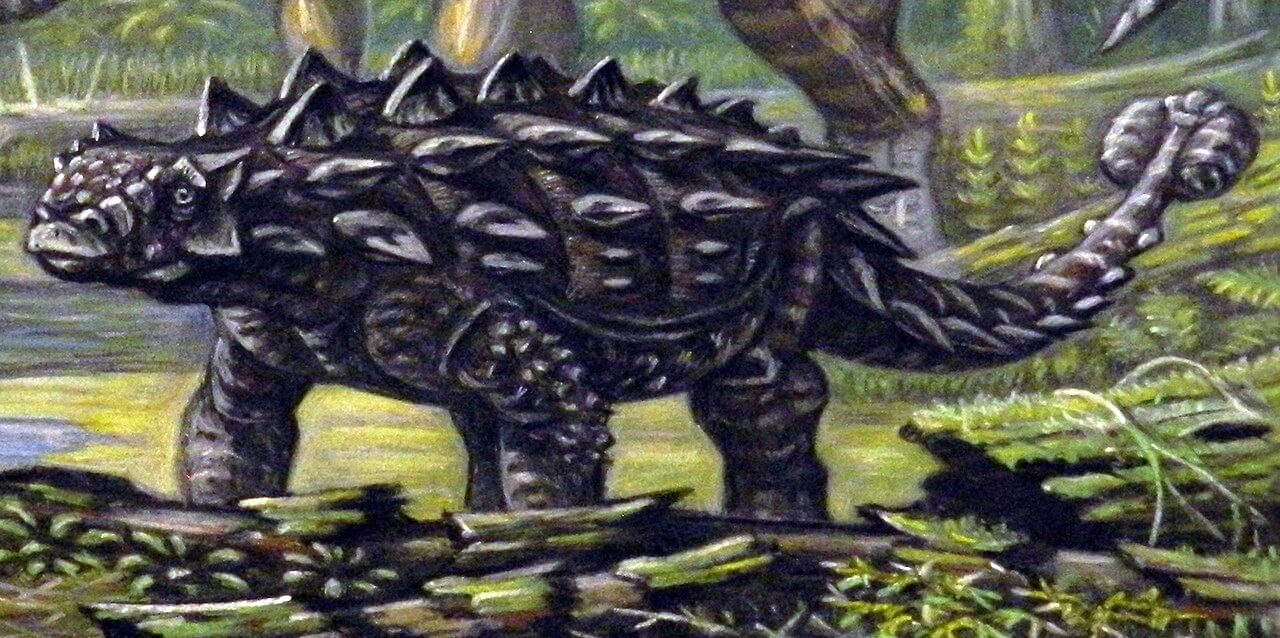
40. Zuul
Zuul, comically referred to as the “Destroyer of Shins,” was found in the Judith River Formation in Montana. Paleontologists uncovered Zuul’s complete skull and tail in 2017, making it the first of its kind to be discovered from these types of remains. The Zuul dinosaur lived in North America during the Late Cretaceous period roughly 75 million years ago. If the name sounds familiar, you’re right! It’s based on the villain Zuul from the movie Ghostbusters because they look similar.
This giant dinosaur was about twenty feet long and weighed more than two tons. Zuul was a fierce fighter based on heavy armor all over its body, including its head and tail. This dinosaur also had horns all along the back of its head to protect its skull. Zuul’s skull was about twenty inches long, making this one big-headed dinosaur. Although its tough exterior makes it ideal for hunting prey, Zuul was a plant-eater.

